When I was in Prince Rupert, I was struck by its many murals and the impact they had on my mental health. So when I was cycling down the Island Highway on Vancouver Island and saw a sign for the ‘murals of Chemainus,’ I didn’t hesitate for very long before pulling off the highway and onto the coast.
Since it’s establishment in the mid-19th century, Chemainus was based on forestry. However, the stagnation of Canada’s resource economy in the 1970s and British Columbia forestry in the 1980s led the people of Chemainus to seek diversification for their single-industry town. Tourism became the focus, and with it the ‘Mural Program’ was born. The first completed murals were ready for visitors in the summer of 1982.
“From the beginning, their subject has been the community’s heritage, reflecting the history of First Nations people and their life here, and the unfolding story of settlement by the families and individuals who built the community. Forestry is the subject of many of the murals, while others reflect the experience of working and living here.” Chemainus Official Mural Map
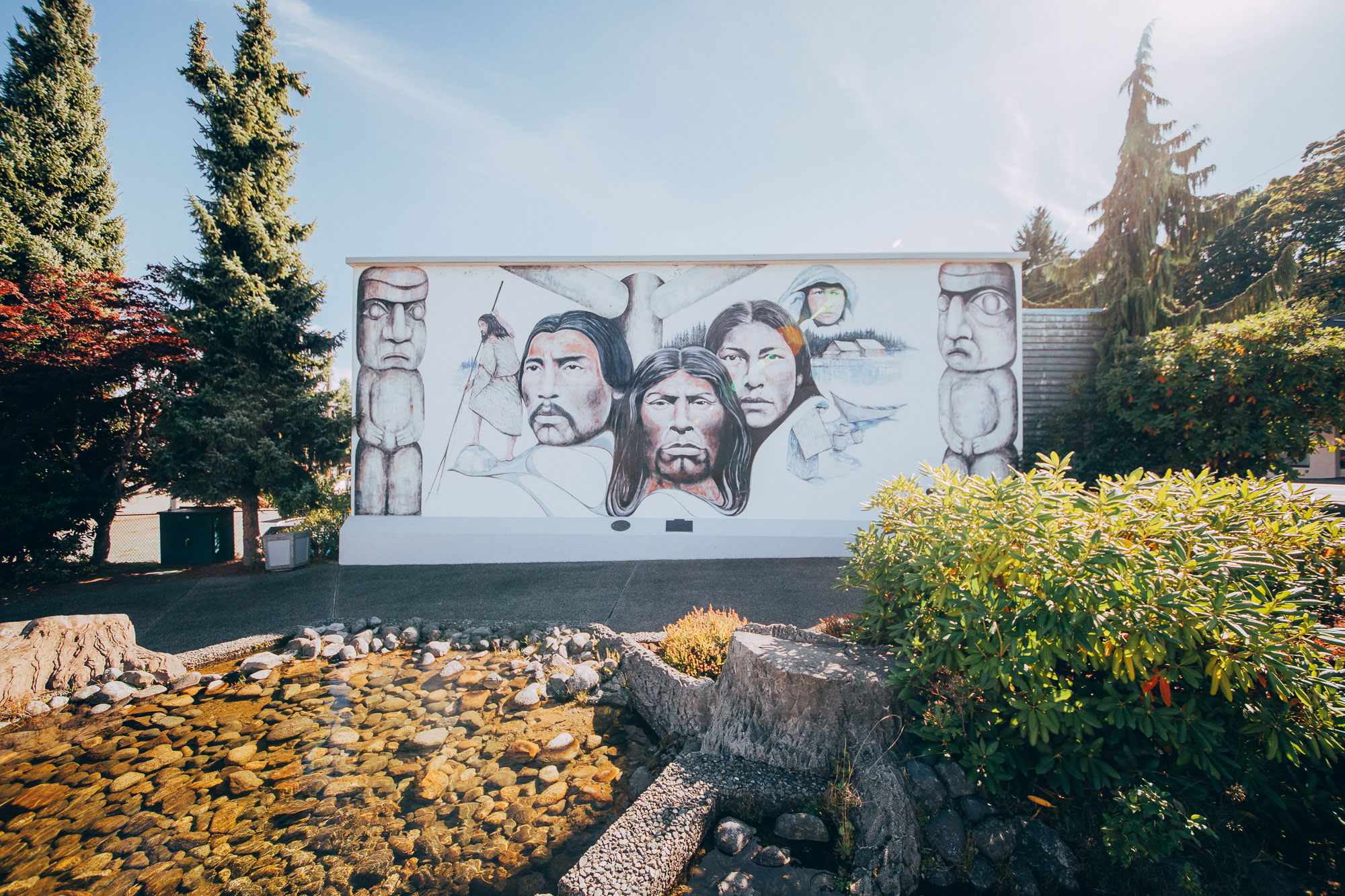
This mural, painted in 1983, overlooks Heritage Square in the centre of Chemainus, and depicts three First Nations figures ‘from the past and present of this area.’
The name Chemainus comes from Tsa-meeun-is (Broken Chest), a legendary shaman and prophet who survived a massive wound in his chest and became a powerful chief. His name is the origin for Stz’uminus First Nation—which reflects its original Hul’qumi’num spelling—as well as the river, valley, bay and town of Chemainus.
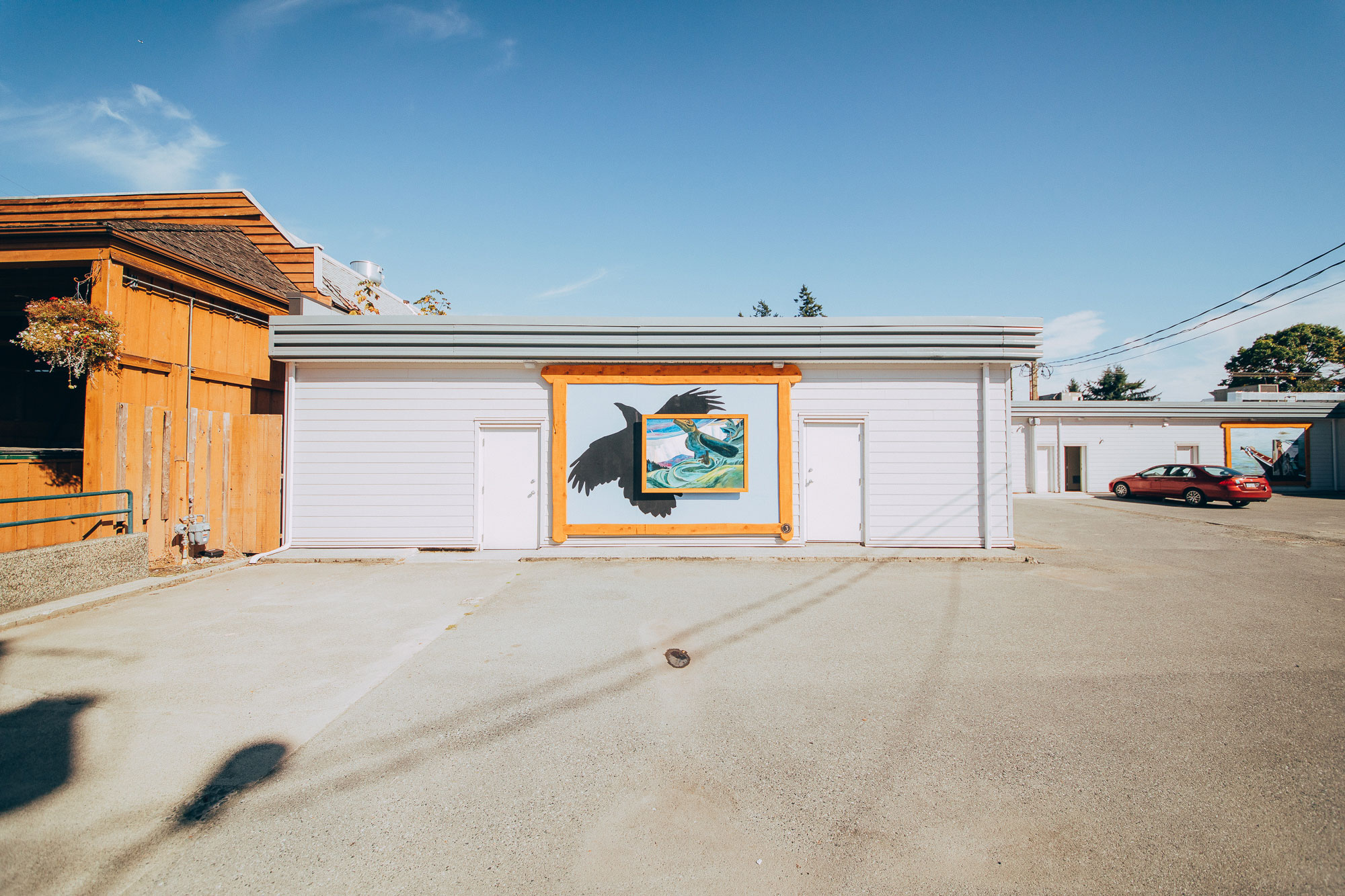
This mural from 2016 contains a reproduction of Emily Carr’s Big Raven, in recognition of Raven as an important symbol in First Nations cultures. Raven stole the sun, moon and stars for humans, bringing light to the world, and plays a major role in the origin stories of fresh water, salmon and fire.
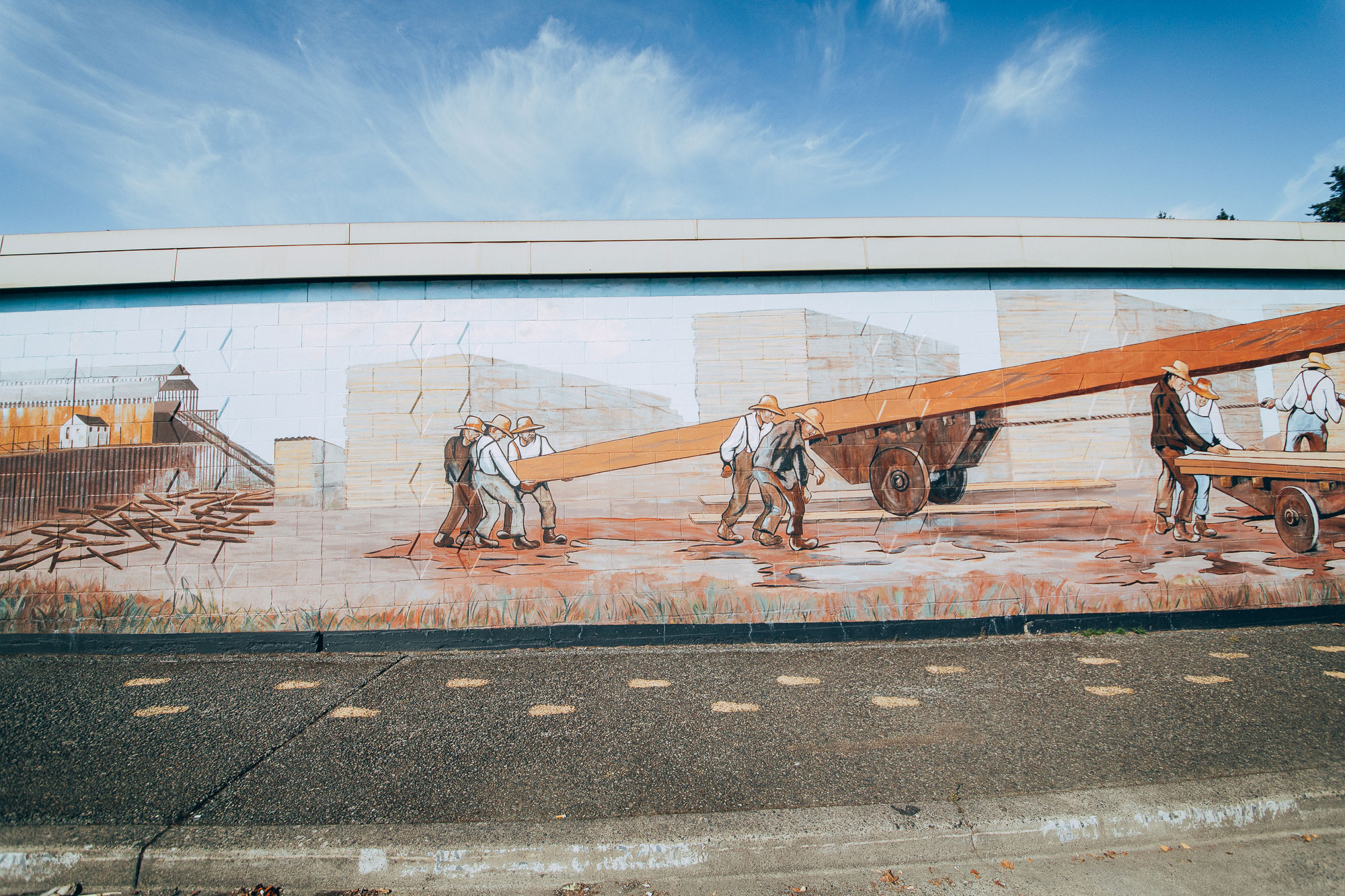
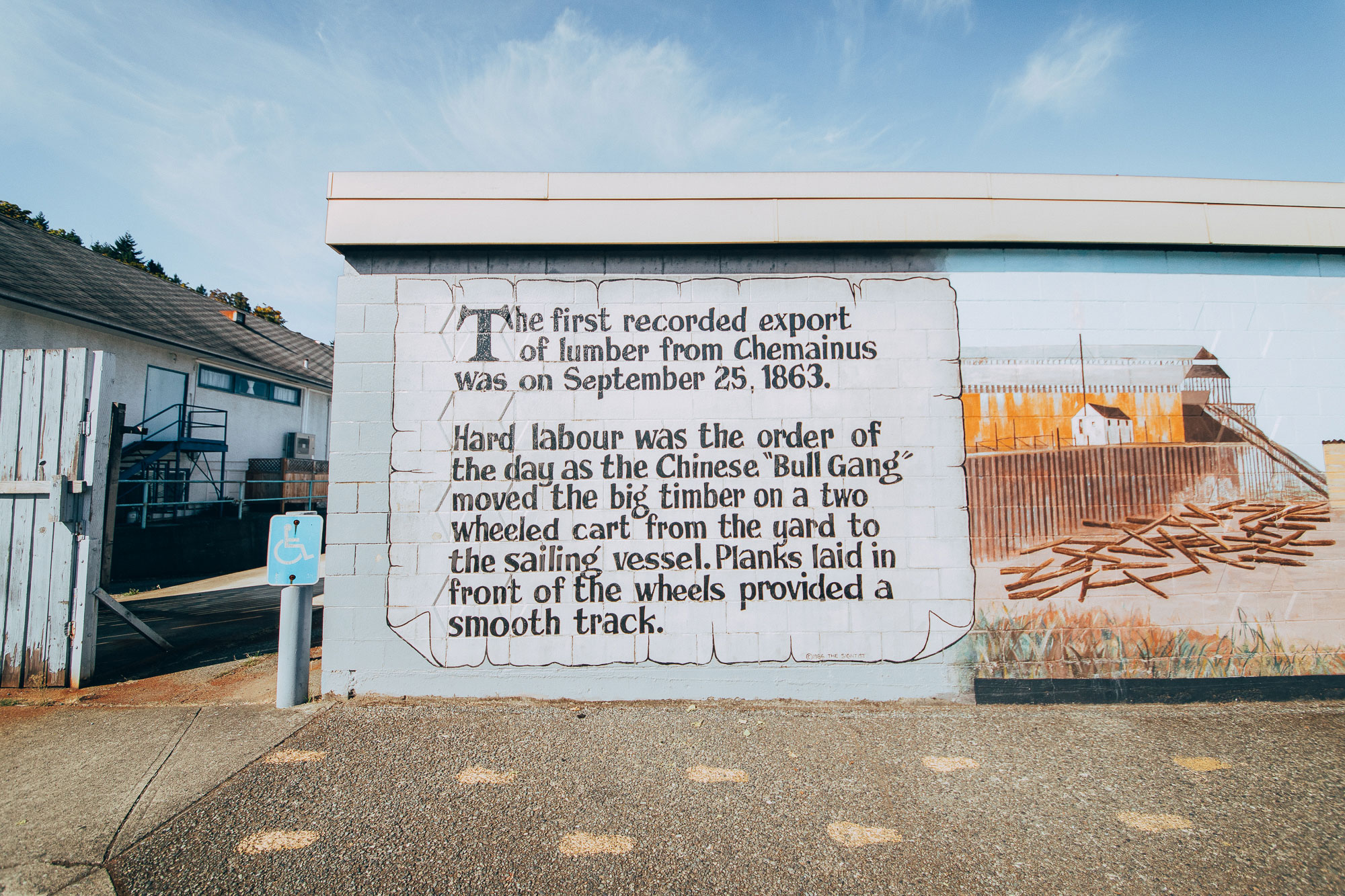
This mural, painted in 1984, depicts some of Chemainus’ early Chinese population, drawn by the promise of steady work in the lumber industry. Chinese labourers played a crucial—and dangerous—role in Canada’s logging and railway industries in the 19th and 20th centuries. It’s worth noting that they immigrated to Canada despite anti-Chinese sentiments and legislation such as the Chinese Immigration Act of 1885, which levied a $50 (later $100 and $500, or the equivalent of the purchase of two homes) head tax on all Chinese immigrants. The tax was removed in 1923—when Chinese immmigration was banned entirely. The ban was lifted in 1947.
According to the Canadian Encyclopedia, while Canadians celebrated Canada Day in the early 20th century, Chinese communities “boycotted any festivities for what they regarded as ‘Humiliation Day.’”
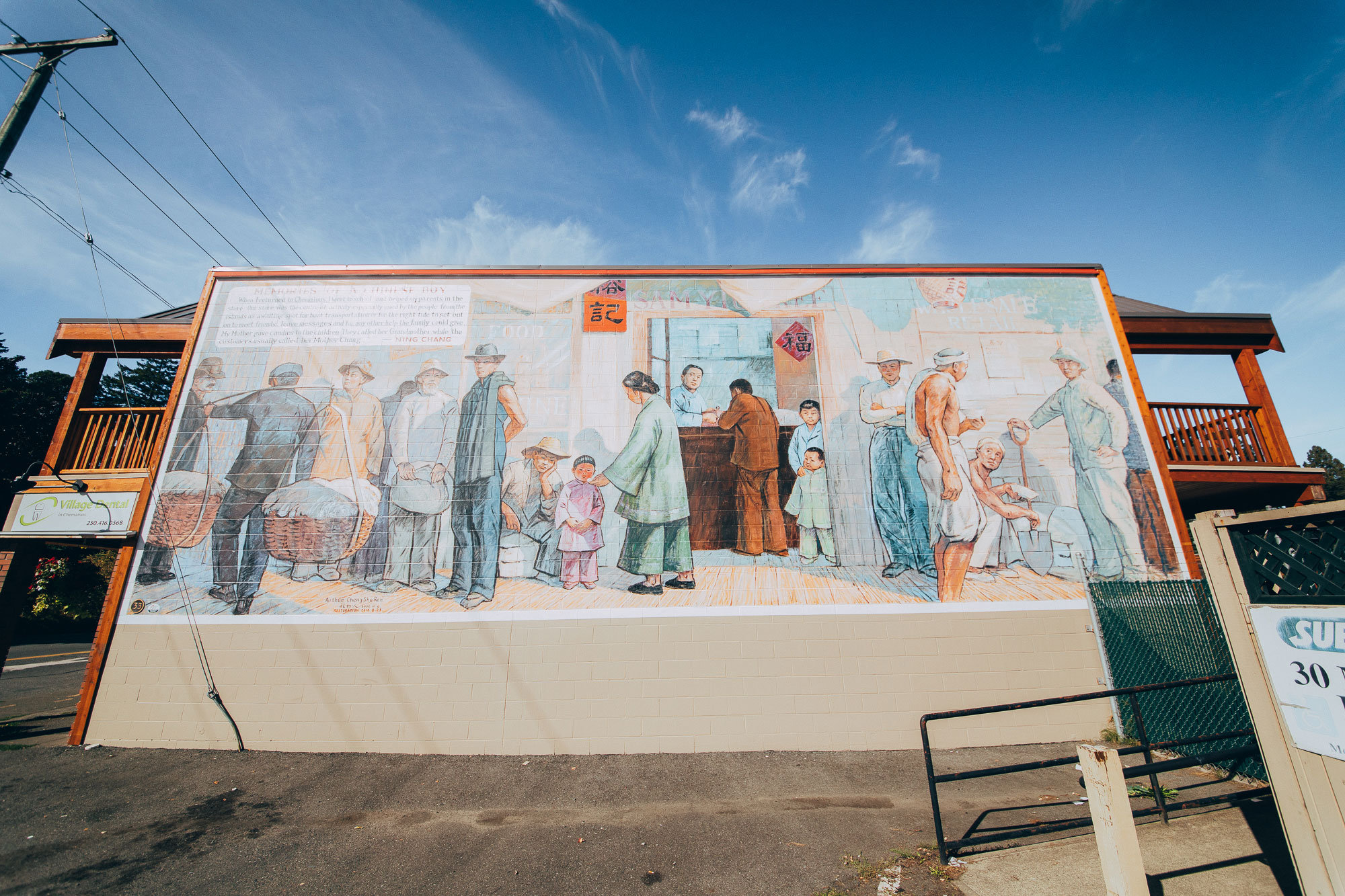
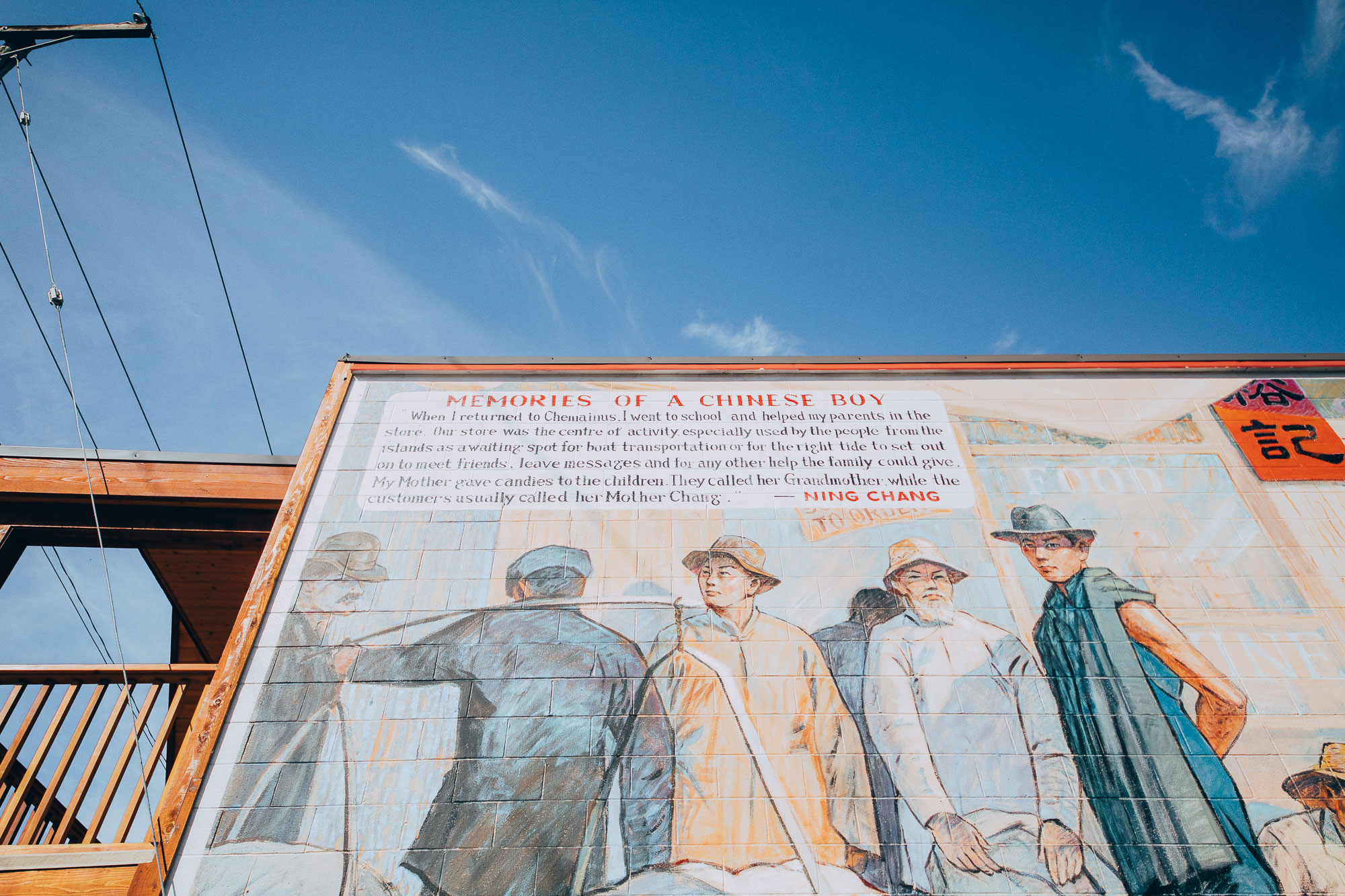
This 1996 painting, entitled ‘Memories of a Chinese Boy,’ describes the history of the Chinese community in Chemainus.
“When I returned to Chemainus, I went to school and helped my parents in teh store. Our store was the centre of activity, especially used by the people from the islands as a waiting spot for boat transportation or for the right tide to set out on to meet friends, leave messgaes and for any other help the family could give. My mother gave candies to the children. They called her Grandmother, while the customers usually called her Mother Chang.” Ning Chang
On my way out of town to catch the ferry to Salt Spring, I met a busker named Mercedes. Her voice drifted across the street while I was photographing a mural, and I just felt that I had to go over and listen a little more carefully.
I’ll let the lyrics speak for themselves.
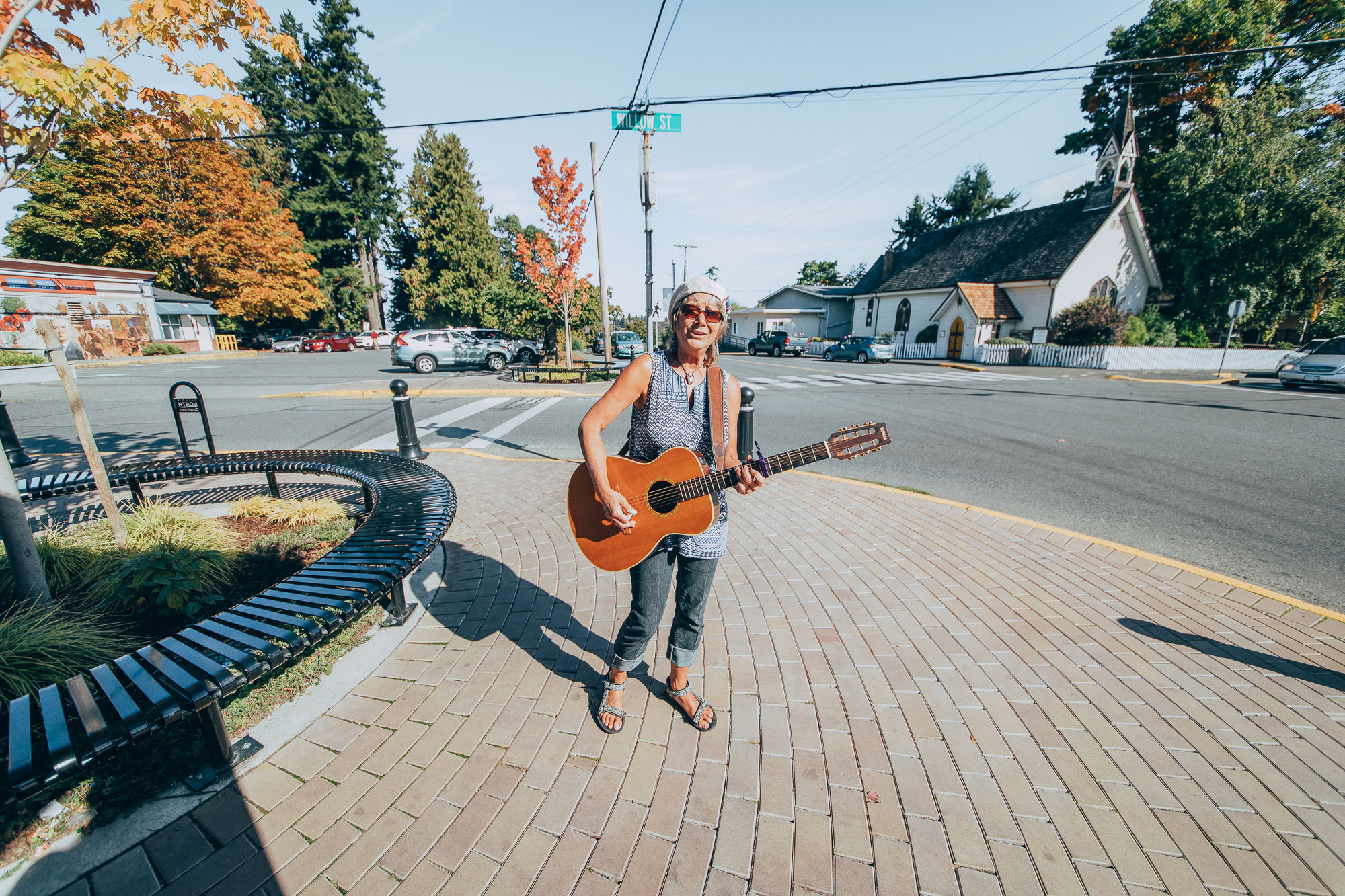
“You know that old trees just grow stronger
And old rivers grow wilder ev’ry day
Old people just grow lonesome
Waiting for someone to say, ‘Hello in there, hello’
So if you’re walking down the street sometime
And spot some hollow ancient eyes
Please don’t just pass ‘em by and stare
As if you didn’t care, say, ‘Hello in there, hello’”